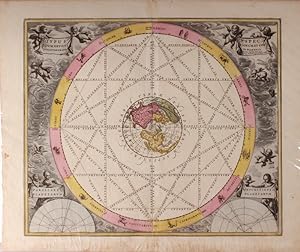Astronomy 18th Cent Engraving Parallaxes by Cellarius Peter Schenk Gerard Valck (1 results)
FeedbackSearch filters
Product Type
- All Product Types
- Books (No further results match this refinement)
- Magazines & Periodicals (No further results match this refinement)
- Comics (No further results match this refinement)
- Sheet Music (No further results match this refinement)
- Art, Prints & Posters (1)
- Photographs (No further results match this refinement)
- Maps (No further results match this refinement)
- Manuscripts & Paper Collectibles (No further results match this refinement)
Condition
- All Conditions
- New (No further results match this refinement)
- Used (1)
Binding
- All Bindings
- Hardcover (No further results match this refinement)
- Softcover (No further results match this refinement)
Collectible Attributes
- First Edition (No further results match this refinement)
- Signed (No further results match this refinement)
- Dust Jacket (No further results match this refinement)
- Seller-Supplied Images (1)
- Not Print on Demand (1)
Language (1)
Price
- Any Price
- Under £ 20 (No further results match this refinement)
- £ 20 to £ 40 (No further results match this refinement)
- Over £ 40
Free Shipping
- Free Shipping to U.S.A. (No further results match this refinement)
Seller Location
Seller Rating
-
£ 3,524.47
Convert currency£ 15.01 shipping from Portugal to U.S.A.Quantity: 1 available
Add to basketNo binding. Condition: Good. TYPUS ASCPECTUUM, OPPOSITIOMUM ET CONJUNCTIONNUM ETZ IN PLANETIS. Prostant Amstelaedami, apud Petrum Schenk, et GearadumValk. Amesterdão. S/d [1708] In folio (de 50x60 cm) Gravura colorida à mão na época mostrando o trânsito de Vénus ? apenas previsto dado não ter ocorrido na geração destes astrónomos. Esta gravura apareceu na impressão da Harmonia Macrocosmica de Andreas Cellarius, publicada em Amesterdão, 1708. Geógrafo e Gravadores: Andreas Cellarius (1595-1665). Peter Schenk (1661-1711) Gerard Valck (1651-1726) O mapa mostra o hemisfério norte com o Polo Norte no centro da Terra. O anel à volta é o círculo do Zodíaco com as linhas e pares dos lugares onde se pode observar o fenómeno. Querubins seguram as paralaxes escondidas e visíveis nos céus, e outros seguram diversas pequenas cartelas. No pé do fólio encontram-se dois diagramas trigonométricos científicos da paralaxe. O trânsito de Vénus é historicamente de grande importância científica, dado ter sido usado para calcular as primeiras estimativas realistas do tamanho do Sistema Solar. Num artigo publicado em 1691, Halley sugere que poderão ser efectuados cálculos mais precisos, usando as medições do trânsito de Vénus, apesar de esse evento estar, na altura, apenas previsto ocorrer em 1761. Halley morre em 1742, mas em 1761, num dos primeiros exemplos de colaboração científica, foram efectuadas diversas expedições a diferentes partes do mundo para que pudessem ser efectuadas medições precisas para efectuar os cálculos descritos por Halley. O último trânsito de Vénus ocorreu nos dias 5 e 6 de Junho de 2012, sendo o ultimo a ocorrer no século XXI. Os próximos trânsitos irão ocorrer nos dias 10 e 11 de Dezembro de 2117 e no dia 8 de Dezembro de 2125. Amsterdam. N.d. [1708] Dim.: In folio (50x60 cm) Contemporary hand-coloured engraving showing the predictable Transit of Venus - just previewed and not seen in this generation - Printed in Andreas Cellarius' Harmonia Macrocosmica. Amsterdam, 1708. Cellarius, Andreas. Peter Schenk (1661-1711) Gerard Valck (1651-1726) The engraving contains the Northern hemisphere. At the centre there is the planet Earth seen from the North Pole. The big ring is the Zodiac circle with the lines and pairs of places of the phenomena. Putti figures hold the hidden and the uncovered parallax in the skies, and other Putti figures hold several tittle cartouches. At the bottom left and right there are two scientific trigonometric diagrams of the parallax. The transit of Venus is historically of great scientific importance as they were used to calculate the first realistic estimates of the size of the Solar System. In a paper published in 1691, Halley proposed that more accurate calculations could be made using measurements of a transit of Venus, although such event was not due until 1761. Halley died in 1742, but in 1761, in an early example of international scientific collaboration numerous expeditions were made to various parts of the world so that thorough observations of the transit could be made to carry out the calculations described by Halley. The last transit of Venus took place on the 5th and 6th of June, 2012, being the last transit of Venus of the 21st century. The next transits of Venus will take place on the 10th and 11th December, 2117, and on the 8th December, 2125. Language: Latim / Latin Location/localizacao: Loja SDC.


